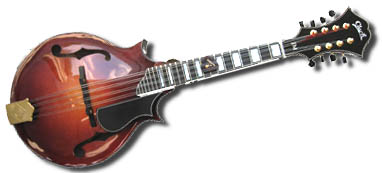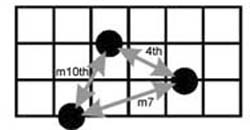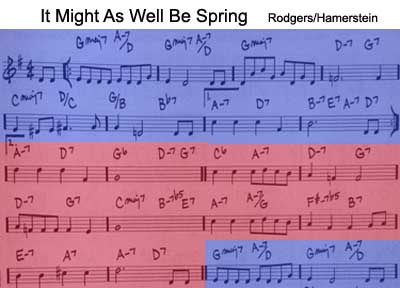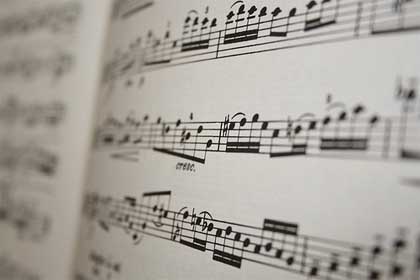« December 2014 |
Main
| February 2015 »
 January 29, 2015 | What makes a jazz mandolin
January 29, 2015 | What makes a jazz mandolin
Five years ago, we posted an article "Brilliance isn't always smart," in which we examined the notion of what makes a mandolin a "jazz mandolin." Most instruments will work for jazz; some may have more potential than others for communicating line and playing chromatically than others, but we offered our own consensus on what works for the genre.
Controversy.
Understand there will be some disagreement even on the notion of "jazz." If you talk to a group of European gypsy jazz acoustic musicians, they need to be armed to live in a world of decibel wars with other instruments. They need the piercing crunch of a chop, much as a bluegrass musician, and that's simply not the sound we're talking about. We are more about ballad and single-note melody with a smattering of accompaniment polyphony. This is a concept where a mandolin is more like a clarinet than a cowbell. It's not about punctuation or percussion, it's about line, subtlety and harmonic nuance.
This kind of tone is maximized on an instrument when attention is focused on string fundamental. Without going too deeply into the science of acoustics, let's just say when sound is produced it includes a composition of fundamental and the harmonics above that pitch. Tuvan throat singers and Digeridoo players make their music by varying the harmonics above a low, droning tone (or fundamental), and this is a simple example of what we are talking about. The same happens when you mess with the tone controls on a stereo; the bass and treble give you a different emphasis on which end of the spectrum the speakers will emphasize.
Understand treble yields definition. This is why microphones designed for speaking are an entirely different animal that one for a musical instrument. The "punch" of highs are necessary for enunciation and word articulation shaped by the percussive impact of lips and teeth. The highs also project across the room, something needed in a bluegrass jam, but not in a musical serenade. Bass wavelengths betray no proximity.
The need for harmonic purity.
There's another reason why the emphasis is on string fundamental is relevant to harmonic conflict. The upper partials of an open triad are great for the sympathetic resonance of a barbershop quartet singing pure triads, and the zingy resounding drones of a celtic drone, but once you start throwing upper chord extensions of complex jazz vocabulary, you really get a conflicting harmonic mess. When you listen to the tone of a good jazz guitar, you'll hear a flatter tone (often flatwound strings), less piercing treble, and a string fundamental that allows the harmony to create the complexity and character of the music, not the instrument.
We're prone to use instruments that are capable of sustain, rich fundamental, and ease of closed fingering for the chromatic variety in the often rapidly shifting tonal centers of jazz. We'll sacrifice the percussiveness.
It's a mandolin, not a cowbell.

Further:
What makes a jazz mandolin?
Jazz and Bluegrass; how close?
Blowing Through the Phrase
Thinking Good Tone Part 1
Posted by Ted at 9:14 PM
 January 23, 2015 | How modes affect mood
January 23, 2015 | How modes affect mood

In trying to explain the difference between minor and major modes, we'd use emotion. "Minor is a sad sound. Major is happy." Often the harmonic makeup of the song had as much (or more) to do with the impact than the lyrics. The following Steve Terrebery video is a great tongue in cheek demonstration of this notion.
Enjoy!
Video Link: Happy Black Metal
Posted by Ted at 8:28 AM
 January 15, 2015 | Zak Borden; Circle of 5ths Part 2
January 15, 2015 | Zak Borden; Circle of 5ths Part 2

This is as good as it gets, pedagogical genius Zak Borden once again bringing to light what's under the hood with a second installment in his video series on the Circle of 5ths. With his personal charismatic charm, playing examples, and graphics, he takes advantage of the medium and brings this essential material home.
Enjoy!
Video Link: Circle of 5ths Part 2
In case you missed it, Part 1
Sign up for Skype lessons with Zak.
Posted by Ted at 6:51 PM
 January 8, 2015 | Best of JM: Chord Economy
January 8, 2015 | Best of JM: Chord Economy
Enjoy the popular archive material below.
From March 8, 2012 | Chord Economy
It's easy to go through life just acquiring chords. Find a new fingering in context and slap it on to your personal chord vocabulary. Years of playing experience, you'll accumulate a healthy arsenal of chords, but sometimes knowing what's under the hood can put the fretboard journey into hyperdrive.
We've talked about this before in expanding the library, exploring what we call "chord economics." The fact we only have four voices with our eight strings limits how many notes of a complex extended chord we can express. The good news is despite the six note complexity in a Maj13 chord, we don't have to cut the proverbial baby in half. Knowing which tones are important, which are superfluous, we can walk proudly into a jam session and still speak the jazz dialect fluently. You just have to know some of the chemistry of the chord.
CHORD VOICE PRIORITIES
Tonality: (Someone else's job!)
Third: Majorness/Minorness
Fifth: (always implied except when diminished or augmented)
Seventh: Stability resolved or "to be" resolved)
Color: (Extensions)
On the above list, if you're playing in a group, the tonality of the chord (the root) is generally covered by the bass (or the lowest note of an instrument lower than the mandolin), so you can chalk that one off. The 3rd is important because of its disclosure of majorness/minorness. The 5th is implied (unless your playing a b5 or Augmented chord), so leave it out. The 7th is important because of its stability, the "resolve me" factor. The last note(s), the 9th or 13th are your color tones. They aren't necessary but they are the delicious frosting on the cake.
In other words, you really only need three, 3rd, 7th, and color extension. Nothing wrong with having a root in there, and if you're playing solo, you want it injected as often as possible. Now you can see the fluidity that remains in four voices. Add the dimension of time, the aural permanence for the ear playing several inversions of the same chord before it changes in the music, and we really strut our harmonic prowess.
Check out some of our other articles on the nature of chord economics.

Further
Three's company. 3-note chord
Axis of the 3rd & 7ths
Mandolin Chord Economics
Need a chord?
New ways to comp with V7 chords
Posted by Ted at 9:25 PM
 January 1, 2015 | Top Six Tips & Tricks of 2014
January 1, 2015 | Top Six Tips & Tricks of 2014
We wanted to take a little time to point out our "Tips and Tricks" section of our site by highlighting some of our favorite articles out of the weekly submissions of the year. Listed below is the link and a brief introduction. Take some time to read these, and feel to continue to dig through other years for some insightful gems.
Mike Marshall on Tremolo
Tremolo is inarguably the foremost recognizable character of mandolin technique. Even the non-musician can recognize the sound of the mandolin in a movie score or commercial when it's used. It's that unique to the instrument.

Keying into FFcP
So you've been practicing your FFcP Scales, mastering the 3rd, 4th, and arpeggios, major and minor, and you feel pretty good about them. Now you're in a funk because despite the pride you have in this accomplishment, you wonder what's next? What do I do with these skills?
More Reverse FFcP! Free Arpeggios PDF
Last week, we mentioned the problem with always learning scales from the root up. We naturally think the scale from the bottom up, but never get very good about starting at the top and going the other way. It's like building strength in your right (or dominant) hand, and never bothering to develop muscles in the other. Just like you need both there, it's a good idea to be able to do your scales in reverse. We started the with the major (Ionian) FFcP exercise last week (see New FFcP... In reverse!).
Can you trust your ears?
Musicians can be notoriously arbitrary and dogmatic. So much of what we experience in the arts is based on intuition and context rather than hard science, and the following video highlights some of the controversy in nailing down verifiable judgement in the aesthetic experience. A Major 7th interval, say a C and a B natural can sound dissonant. Add an E and a G, and you have a Major 7th chord, arguably one of the prettiest in jazz. Play that chord in a bluegrass jam and you'll be thrown off the stage

Vamps summary. How to amaze and impress your friends.
One of the series we are most proud of was our 2012 comprehensive approach to Vamps in which we mapped out some common 3-note comping patterns you can apply to a myriad of tunes. These were even placed into permanent history as a Lesson Archive at the Mandolin Cafe

5 Steps to Mastering Sight-Reading
If you're a simple folk musician, sight-reading is not a priority item in your took bag. You may function completely in an aural world, but if you've ever wanted to participate in an orchestra , or sit in with a reading band, you want good sight-reading chops.
Posted by Ted at 8:03 AM

Disclaimer: In the 'Information Age' of the 21st Century,
any fool with a computer, a modem, and an idea can
become a self-professed 'expert." This site does not
come equipped with 'discernment.'
|



